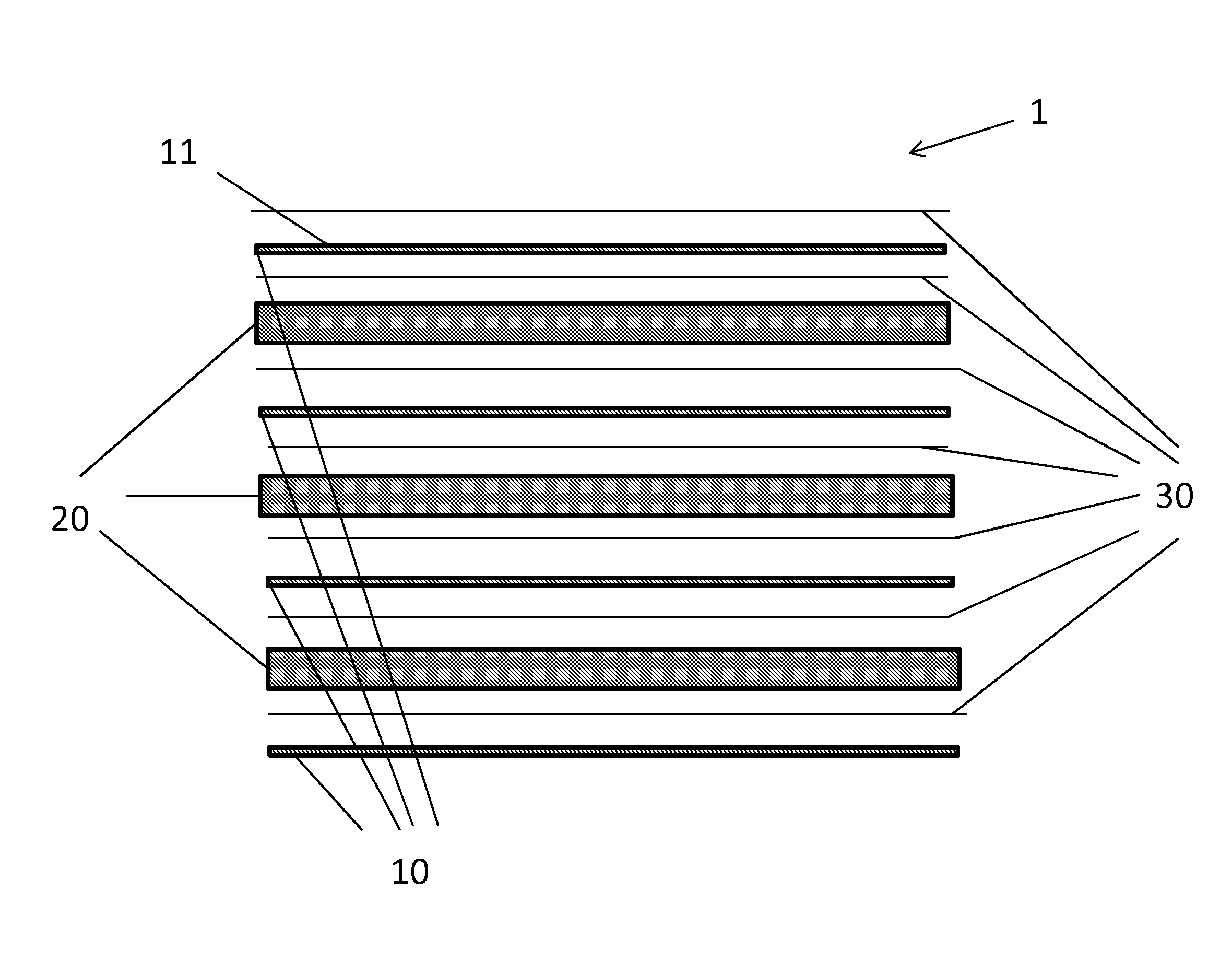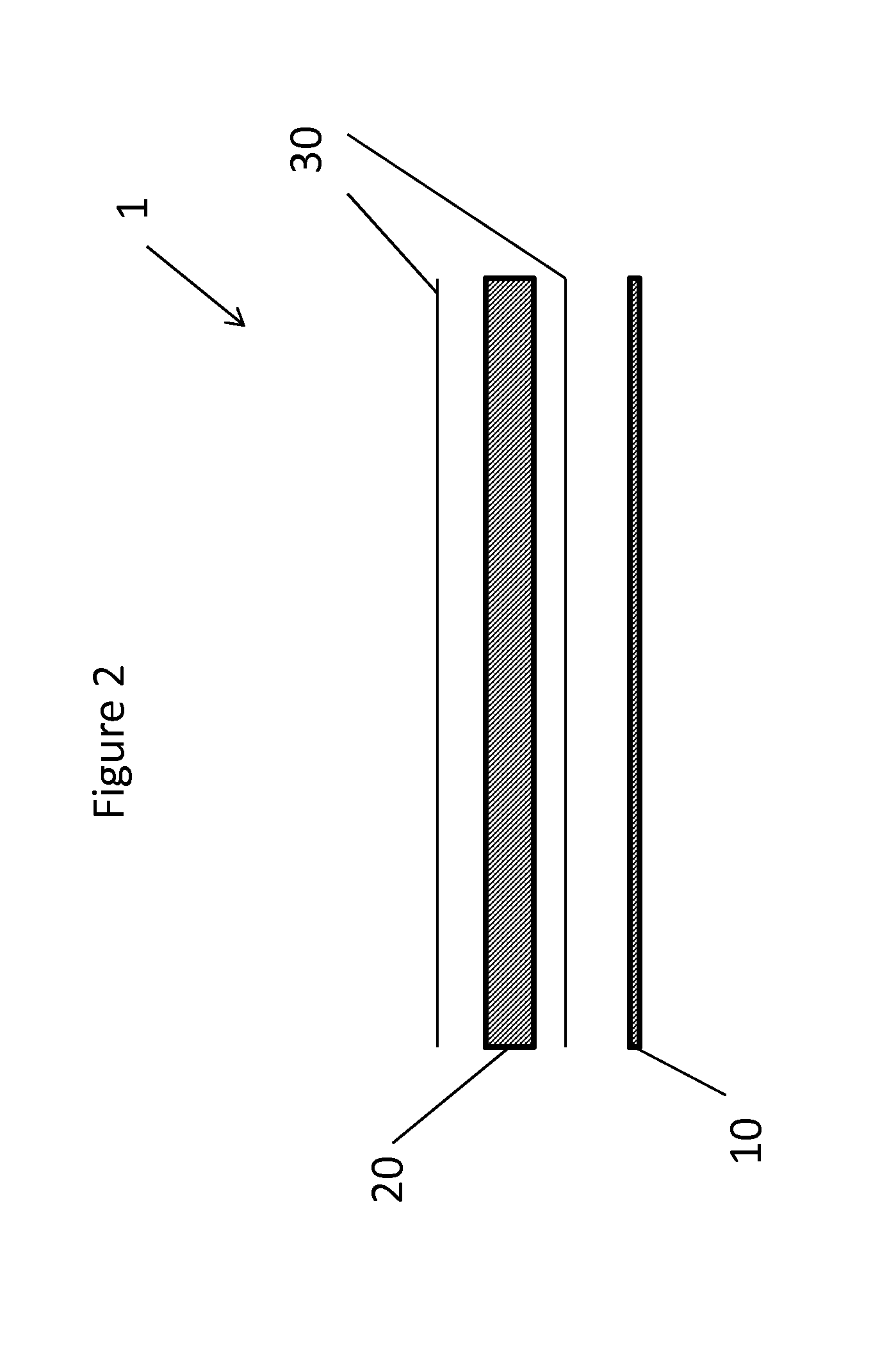Thermal insulating material
Inactive Publication Date: 2014-07-17
FAIRLANE IND
View PDF8 Cites 11 Cited by
- Summary
- Abstract
- Description
- Claims
- Application Information
AI Technical Summary
Benefits of technology
[0012]The present invention relates to insulating the door of a freezer or refrigeration with insulating material that is thin, flexible and highly effective. The insulating material has vertical thermal insulation properties and lateral thermal conducting properties. The material is made of alternating layers of aluminum foil and
Problems solved by technology
A long standing problem with freezers is condensation or sweating on the external surface of the freezer door which results from the external surface being at a temperature below the dew point temperature of the external air contacting it.
It requires substantial additional material and labor to install a heater.
The source of heat is buried in the foamed insulation and is not accessible after the manufacture of the refrigerator is completed.
A hot gas loop complicates the refrigeration system and provides a potential source for
Method used
the structure of the environmentally friendly knitted fabric provided by the present invention; figure 2 Flow chart of the yarn wrapping machine for environmentally friendly knitted fabrics and storage devices; image 3 Is the parameter map of the yarn covering machine
View moreImage
Smart Image Click on the blue labels to locate them in the text.
Smart ImageViewing Examples
Examples
Experimental program
Comparison scheme
Effect test
 Login to View More
Login to View More PUM
| Property | Measurement | Unit |
|---|---|---|
| Thickness | aaaaa | aaaaa |
| Thickness | aaaaa | aaaaa |
| Angle | aaaaa | aaaaa |
Login to View More
Abstract
A thermal insulating material that is superior to blown-in polyurethane foam that has vertical insulating properties and lateral thermal conducting properties, and is made of alternating layers of aluminum metal foil and insulating foam that causes the temperature of a cold spot to increase at least 3 degrees F. when compared to an equivalent amount of blown-in polyurethane foam. This material is suitable for increasing the temperature of cold spots of the exterior of refrigerator/freezer doors.
Description
CROSS-REFERENCE TO RELATED APPLICATIONS[0001]This utility patent application claims the benefit of provisional patent application No. 61 / 764,221 filed Feb. 13, 2013 and provisional patent application No. 61 / 752,323 filed Jan. 14, 2013, which are hereby incorporated by reference.STATEMENT REGARDING FEDERALLY SPONSORED RESEARCH[0002]Not Applicable.APPENDIX Not Applicable.BACKGROUND OF THE INVENTION[0003]1. Field of the Invention[0004]The present invention relates to a method of preventing the sweating (condensation of water vapor) of the exterior panel of a freezer or refrigerator door or wall due to cold spots, particularly at the recess behind the handle where the insulation is typically thinner than the rest of the door. The typical thermal insulating material for refrigerators or freezers is blown-in polyurethane foam in the wall panel. An improved insulating material having vertical insulating properties and lateral thermal conducting properties has been found to prevent or dimin...
Claims
the structure of the environmentally friendly knitted fabric provided by the present invention; figure 2 Flow chart of the yarn wrapping machine for environmentally friendly knitted fabrics and storage devices; image 3 Is the parameter map of the yarn covering machine
Login to View More Application Information
Patent Timeline
 Login to View More
Login to View More IPC IPC(8): F25D23/08
CPCF25D23/08F25D23/06B32B5/18B32B15/046B32B15/20B32B2266/025Y10T156/10
Inventor RAGLAND, RAYMOND E.MALICK, KEVIN W.
Owner FAIRLANE IND
Features
- R&D
- Intellectual Property
- Life Sciences
- Materials
- Tech Scout
Why Patsnap Eureka
- Unparalleled Data Quality
- Higher Quality Content
- 60% Fewer Hallucinations
Social media
Patsnap Eureka Blog
Learn More Browse by: Latest US Patents, China's latest patents, Technical Efficacy Thesaurus, Application Domain, Technology Topic, Popular Technical Reports.
© 2025 PatSnap. All rights reserved.Legal|Privacy policy|Modern Slavery Act Transparency Statement|Sitemap|About US| Contact US: help@patsnap.com



